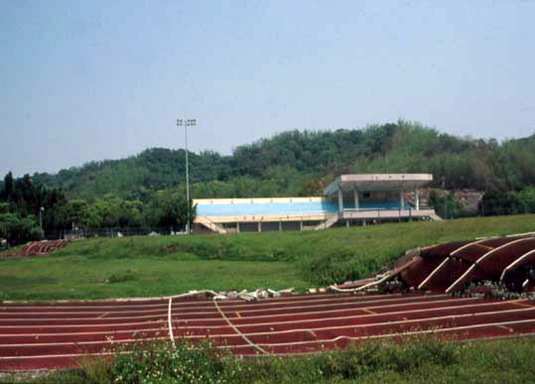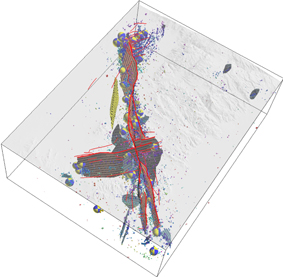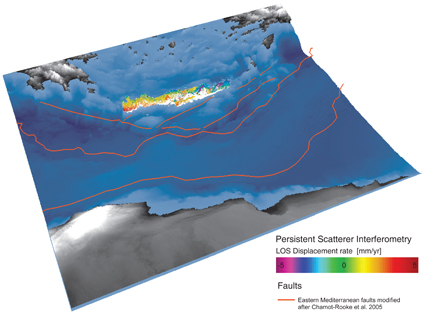Active Tectonics, Tectonic Geomorphology, and Earthquake Studies

Surface rupture of the 1999 Mw 7.7 ChiChi, Taiwan, earthquake cutting across the stadium of Kuangfu Junior High School at Wufeng. It is a textbook example of fault scarps of thrust earthquakes. An earthquake museum with a roof over this part of the racetrack was later built, to preserve the scarp and educate people about earthquakes. (Photo © S. Carena, March 2000)
People
Anke Friedrich, Sara Carena, Simon Kübler, Stefanie Rieger, Mjahid Zebari, Beth Shaw-Kahle
3-D structural and tectonic modeling
 We apply 3-D structural modeling to a variety of problems (from 3D fault modeling of individual faults to the behavior of complex fault networks and of accretionary wedges). Courses and workshops in modeling are offered, depending on demand from students.
We apply 3-D structural modeling to a variety of problems (from 3D fault modeling of individual faults to the behavior of complex fault networks and of accretionary wedges). Courses and workshops in modeling are offered, depending on demand from students.
Tools: we currently have licenses for Aspen-SKUATM , LIME, and VRGS, and use various state-of-the-art free and shareware software specifically designed for mapping and structural analysis (GMDE, Stereonet 11, FaultFold, Trishear3D).
Fault network of the 2019 Ridgecrest earthquakes.
Closed project: DFG Project no. 408273939 (S. Carena), 2018 - 2022: 3D Geometry and Kinematics of the Taiwan Arc-Continent Collision from 3D Mapping.
Detection of active vertical deformation using Radar Interferometry

The detection of the vertical deformation patterns of the Earth's surface allows us to identify active tectonic processes.
We use Persistent Scatterer Interferometry on a regional scale to better understand active tectonics and earthquakes.
Last updated: 22.10.2025



